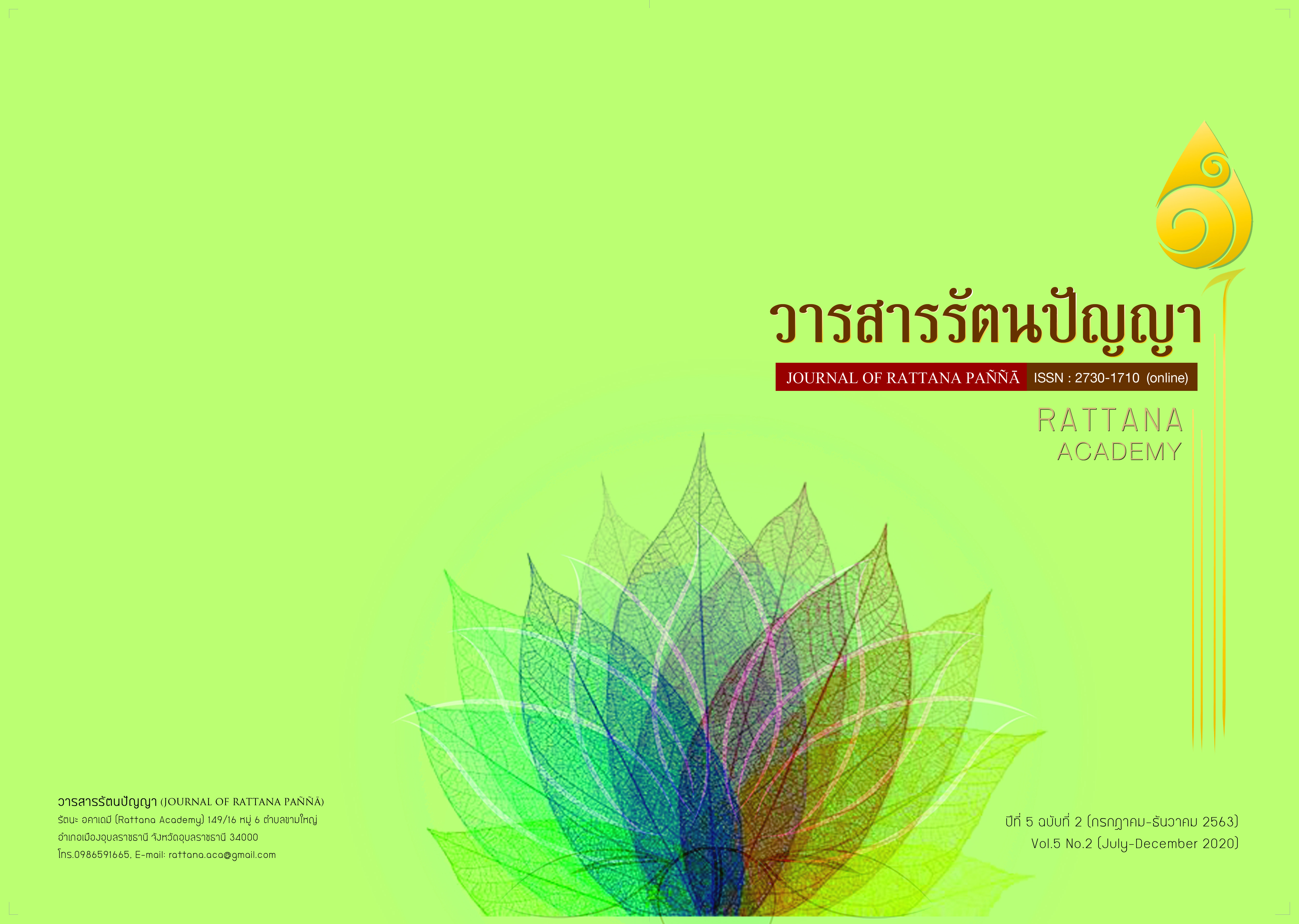THE DEVELOPMENT OF SELF-RELIANCE CURRICULUM APPLYING THE SUFFICIENCY ECONOMY FOR STUDENT GRADE 4-6
Main Article Content
Abstract
The purpose of this research are: 1) to develop self-sufficiency curriculum applying the sufficiency economy for grade 4-6 students. 2) to study the results of using the self - sufficiency curriculum applying the sufficiency economy, for grade 4-6 students. The targets were 13 students grade 4-6 students in the academic year 2019 at Ban Nam Cham (Wichai Chananukroh) School, consisting of 13 people. The research instruments were the self-sufficiency curriculum applying the sufficiency economy for grade 4-6 students consisting of lesson plans Self-reliance achievement test based on the sufficiency economy, Self-sufficient notebook. The data analysis were the percentage, mean, deviation standard.
The results found that: there was Development of the self-sufficiency curriculum applying the sufficiency economy for grade 4-6. students which composed of 5 learning units. The constructed curriculum had a suitable average, at a high level ( = 4.16, S.D = 0.71). The learning units and the lesson plans had a suitable average, at a high level (
= 4.31, S.D = 0.54).
The results of using the self-sufficiency curriculum applying the philosophy of the sufficiency economy for grade 4-6 students found that the post-test achievement scores of the experimental group had an average ( = 24.60), standard deviation (S.D.= 2.69) and pretest achievement scores, there was an average (
= 14.54) standard deviation (S.D.= 1.59). The posttest scores of the target group were higher than pretest scores. Development percentage at 40.82
Article Details
References
ยุพิน อินต๊ะวงศ์. (2554). การพัฒนาหลักสูตรเศรษฐกิจพอเพียง ชั้นประถมศึกษาปีที่ 6.
วิทยานิพนธ์ ครุศาสตร์มหาบัณฑิต. มหาวิทยาลัยราชภัฏลำปาง.
ทิศนา แขมมณี. (2556). ศาสตร์การสอน. พิมพ์ครั้งที่ 17. กรุงเทพฯ: ด่านสุทธาการ
พิมพ์
วิชัย วงษ์ใหญ่. (2532). กระบวนการพัฒนาหลักสูตร และการเรียนการสอน. กรุงเทพฯ:
สุวีริยาสาส์น.
สงัด อุทรานันท์. (2532). พื้นฐานและการพัฒนาหลักสูตร. พิมพ์ครั้งที่ 6. กรุงเทพฯ:
มิตรสยาม.
สุมาลี สิงห์เกิด. (2553). ปัจจัยบางประการที่สัมพันธ์กับการดำเนินชีวิตแบบพอเพียง
ของนักเรียนชั้นมัธยมศึกษาปีที่ 2 โรงเรียนสังกัดสำนักงานเขตพื้นที่การศึกษา
กรุงเทพมหานคร เขต 2.ปริญญานิพนธ์ กศ.ม. (การวิจัยและสถิติทางการศึกษา).
กรุงเทพฯ: บัณฑิตวิทยาลัย มหาวิทยาลัยศรีนครินทรวิโรฒ.
สำนักงานคณะกรรมการพัฒนาเศรษฐกิจและสังคมแห่งชาติ. (2560). เอกสารสรุปผล
การสัมมนา : การประยุกต์ใช้ปรัชญาของเศรษฐกิจพอเพียงเพื่อแก้ไขปัญหา
ความยากจน. กรุงเทพฯ.
แผนพัฒนาเศรษฐกิจและสังคมแห่งชาติ ฉบับที่ 12 พ.ศ.2560 -2564. (2560).
กรุงเทพฯ: โรงพิมพ์คุรุสภา.
Taba, H. 1962. Curriculum Development Theory and Practice. New York:
Harcourt, Brace and World.


